Dartmouth doctoral student studies contaminants in maple syrup
|
Published: 03-27-2025 6:01 PM
Modified: 03-31-2025 12:21 PM |
HANOVER — While attaining a master’s at Yale during the COVID-19 pandemic, Emily Sigman began tapping the Norway maples in the backyard of her New Haven, Conn., home.
“It was my sourdough equivalent,” she said.
Soon Sigman was spearheading a neighborhood movement to green up an abandoned lot, where there were more maples and room for a garden. She set up raised beds there and began helping people grow vegetables, at which point she was confronted by another resident concerned about contamination.
It was a valid concern. A shuttered factory for Winchester Repeating Arms loomed across the street. For nearly 150 years, the gun manufactured had operated the factory that closed in the early 2000s.
Sigman had mixed emotions. While she shared the resident’s concern, she remained a champion of the community garden. “Is it the perfect thing? Probably not. But compared to what? The Spaghetti-O’s I grew up on?”
Sigman and her partner — Steve Winter, a Connecticut state legislator — had maple syrup they’d produced in New Haven tested. It came back showing enough lead that “it would probably be pulled off store shelves,” Sigman said.
They ran the syrup through a felt cone filter, a relatively inexpensive and readily available piece of equipment, and had it retested. The result? Only a trace of lead, equivalent to what’s found naturally occurring in any food.
The heated exchange with a neighbor and the testing insight were just two of many factors sparking Sigman’s current mission. She aims to shed light on contamination in maple syrup in both urban and rural, non-commercial sites across New England and develop a sugaring protocol for safer syrup for people who want to tap their own trees.
Article continues after...
Yesterday's Most Read Articles
Her project is called Safe Sugar.
Now a doctoral student in Dartmouth’s Ecology, Evolution, Environment and Society program who splits her time between New Haven and Windsor, Sigman, 36, is working with the Connecticut Agricultural Experiment Station in New Haven to pioneer maple syrup testing. The work is funded through a grant from the U.S. Department of Agriculture’s Acer Access program.
At the heart of Sigman’s research is the question of concentration. High levels of heavy metals and a group of chemicals known as PFAS have been found in groundwater across New England. Forty gallons of harvested maple tree sap are boiled down to make just one gallon of maple syrup. Do the PFAS, or perfluoroalkyl and polyfluoroalkyl substances also known as “forever chemicals,” and heavy metals become concentrated in the syrup?
“You have potential for environmental sources (of contaminants) and then processing issues that might be totally separate” with maple syrup, said University of Vermont Extension Maple Specialist Mark Isselhardt.
Research is very much ongoing, and even data collection methods could contribute to something like PFAS contamination. “We just don’t know with PFAS,” Isselhardt said.
Sigman’s hypothesis that heavy metals and PFAS could be filtered out of maple syrup is well-founded. Those who have made syrup know that, after boiling sap, a granular sugar sand settles out. This is composed of minerals and organic matter and is also known as nitre.
Some sugaring hobbyists leave nitre in syrup. What’s not yet clear is if PFAS particles might cling to this organic matter, as they tend to do in soil studies. If there’s a relatively simple and affordable way to filter syrup of PFAS and heavy metals, Sigman intends to find it.
“That’s what’s unique about syrup,” she said. After all, “You can’t filter lettuce.”
Sigman hopes her research will equip more people to tap maple trees.
“The last thing I want in the world is for there to be less maple syrup,” Sigman said as she stood in the middle of the Dartmouth sugarbush off of Route 10 in Hanover last week.
Around her, up a hillside across from the Dartmouth organic farm, 10 maples had been tapped with collection jars. This site is one of 10 spanning backyards and university forests in New Hampshire, Vermont, Massachusetts and Connecticut, including urban New Haven.
Sigman is pragmatic about contamination risks. The heavy metals she’s looking for — arsenic, cadmium, chromium, lead and zinc — occur in nature, even in pristine-looking mixed-hardwood forests like this one, and PFAS chemicals are ubiquitous. There’s no escaping a certain amount of hazard.
Sigman said that she thought hard about wearing a raincoat to collect samples during inclement weather this spring. Waterproof fabric is a common source of PFAS. In the end, she wore the jacket and duly made a note of it in her sample records.
For tree taps, Sigman has to buy tiny elbow joints made of PFAS-free high-density polyethylene from a plumbing supply company.
Sigman puts on blue nitrile gloves to prevent potential cross-contamination with PFAS from her own skin. While she admits that “one sample does not a scientific study make,” she’s doing everything possible to safeguard each bottle of tree sap.
“There’s not a teaspoon of soil anywhere on earth that doesn’t have PFAS in it,” Sigman said. While people can’t escape contaminants completely over the course of their daily lives, they can mitigate exposure — with filtration, for example.
A protocol for safer maple sugaring is within reach. Part of Sigman’s study investigates filtration methods that could be easily accessible and affordable.
Her results won’t be in for months, but she’s already found an audience. “People really want to know,” she said. Sigman has been presenting her research across New England and finds avid i nterest from small-scale sugarmakers wherever she goes.
Enthusiasm for maple sugaring doesn’t necessarily match available knowledge. “I’ve found people sugaring in superfund sites,” Sigman said. She’s gathering samples from one such site in Bennington, Vt.
“Her research is quite rigorous, and yet she makes it very accessible and tangible to her audience and invites us all into the process,” said Bennington College Professor Caitlin McDonough MacKenzie, who specializes in climate and plant ecology and helped Sigman choose the Bennington test site.
Sigman conducted a demonstration of her work for Bennington students.
Previous discovery of contaminants in maple syrup has led to changes in the industry.
A case of lead poisoning from maple sugaring equipment used to make apple cider on a small farm resulted in a phaseout of galvanized storage barrels at least 10 years ago, said Ellie Palmer, food safety expert at the Vermont Maple Sugar Makers’ Association.
Additional efforts to limit contamination are afoot.
“We’re working on phasing out brass, bronze, copper (in Vermont maple sugaring), which can contain lead, which, if sap is acidic near the end of the season, could leach,” Palmer said.
Sigman emphasizes that her samples are not from commercial maple syrup, which she doesn’t expect is contaminated. Her aim is to equip people who want to make syrup safely for their own use.
People tapping their own maple trees should be sure to use food-grade receptacles for harvest and storage, said Isselhardt. Equipment sold specifically for use in maple sugaring is a good source, as is a restaurant-supply store.
The North American Maple Syrup Council provides a free, in-depth guide to best practices in maple sugaring on any scale, available at https://mapleresearch.org/pub/manual/.
Kate Oden is a freelance writer. She can be reached at odenk06@gmail.com.
CORRECTIONS: Emily Sigman, a doctoral student at Dartmouth College who is resea rching how to produce maple syrup safely even from contaminated soils, is 36. A story about her work in the Friday Valley News provided an incorrect age for Sigman. Sigman conducted a demonstration for Bennington (Vt.) College students. The same story was incorrect in the students' participation in Sigman's work. Sigman is collecting samples from backyards, superfund sites, university forests (which are controls) and public lands. The same story was incorrect in one of the types of properties where she is collecting samples. Some hobbyists leave nitre, a granular sugar sand that settles out when sap is boiled, in the syrup. The same story was incorrect in the extent of that practice. Sigman is gathering sap samples from a contaminated site in Bennington. The story was incorrect in that property's classification.

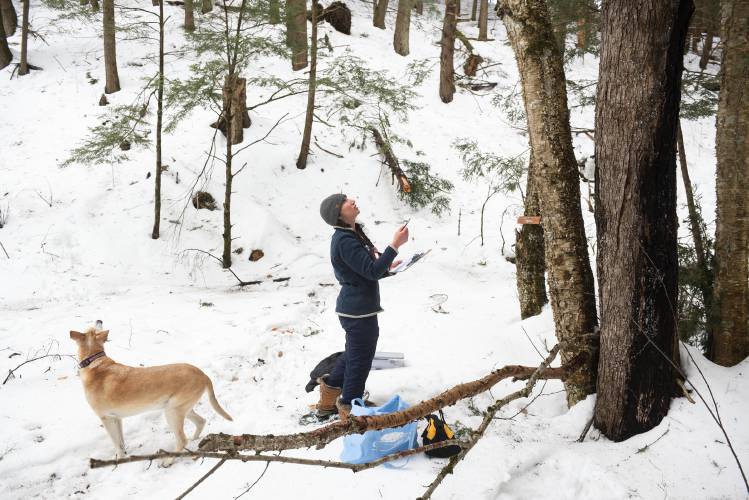
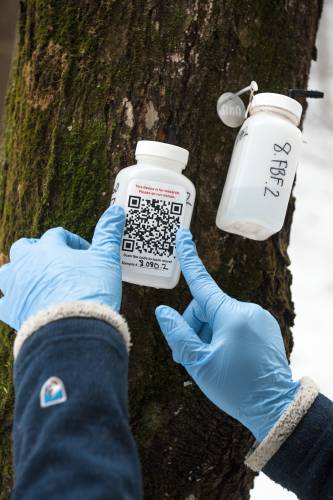
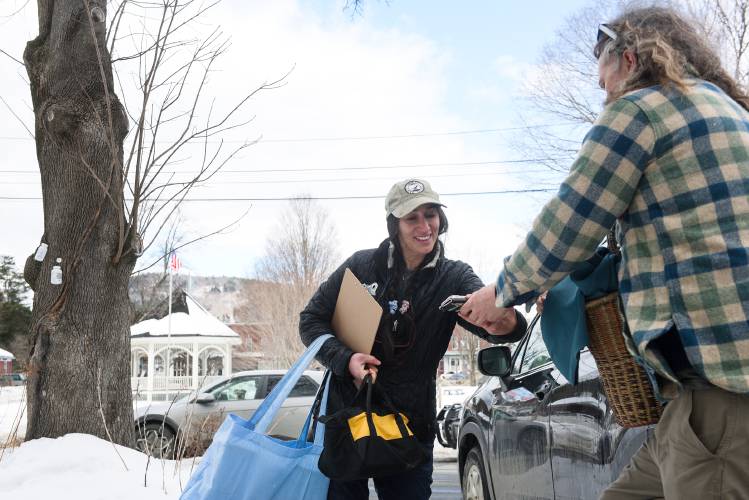
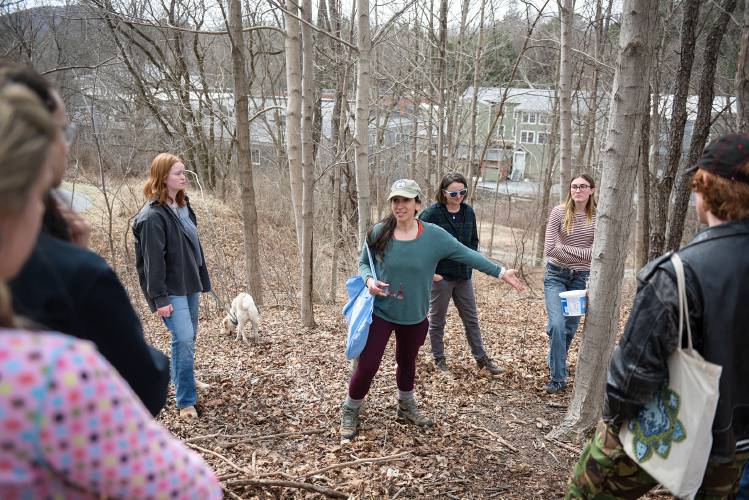
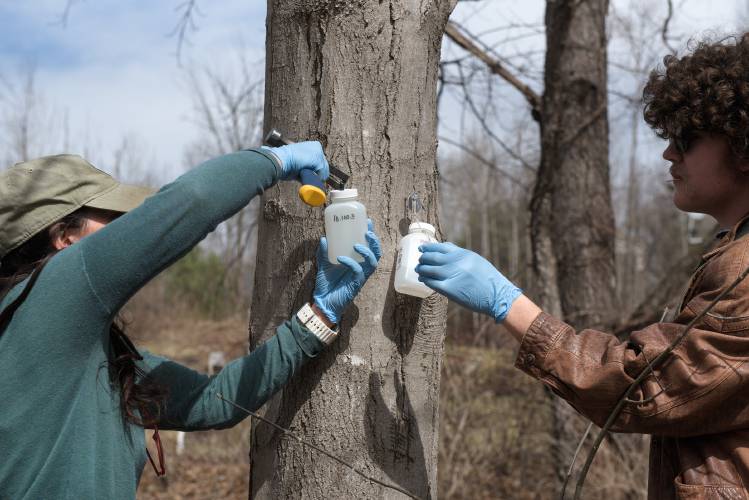
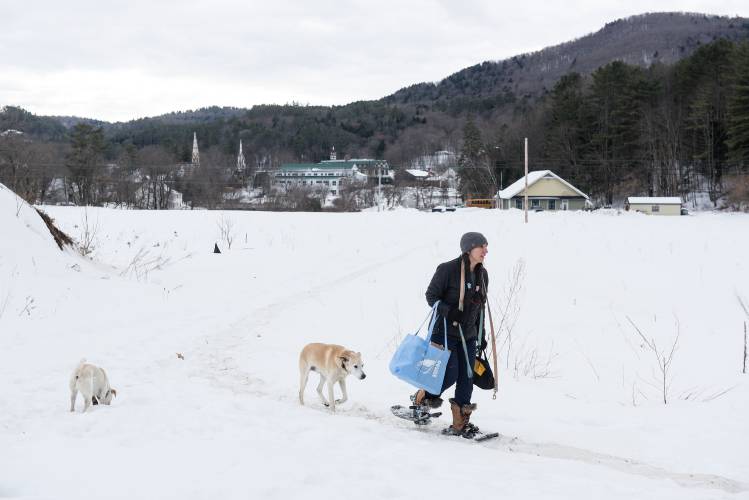
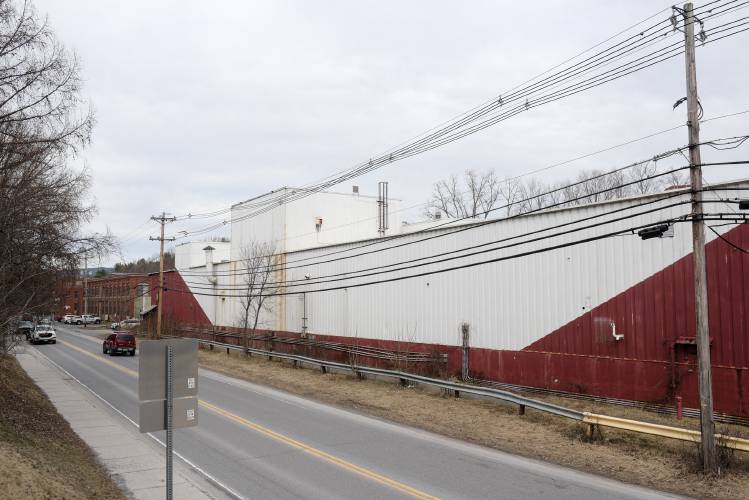





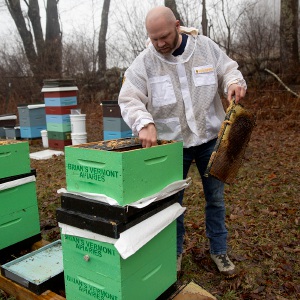 Upper Valley beekeepers assess winter losses
Upper Valley beekeepers assess winter losses  Art Notes: ‘If you love ‘Messiah,’ you’ll love this piece’
Art Notes: ‘If you love ‘Messiah,’ you’ll love this piece’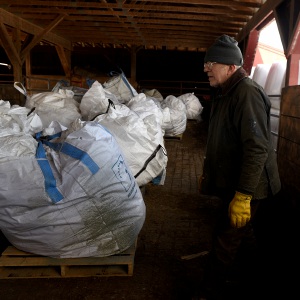 Farmer-led project gets grant to recycle agricultural plastics
Farmer-led project gets grant to recycle agricultural plastics Art Notes: We the People’s latest show offers hopeful message
Art Notes: We the People’s latest show offers hopeful message
